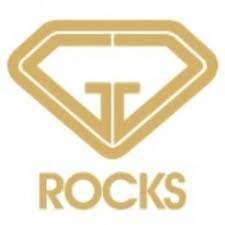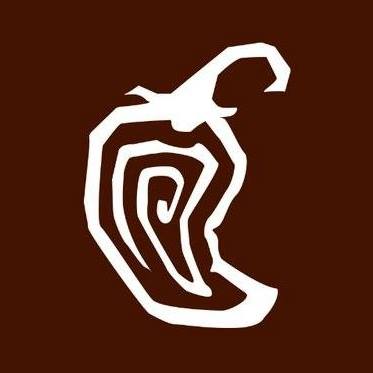Total 0 ratings
Overview
elfagr for medical devices is a best Business in 34 ش اسماعيل سرى - القصر العينى - امام النقابة العامة للأطباء. We have 29 years experience in medical devices, medical equipment's field. If you need any help please call us our mobile number 01006101666 and you can send an email our support Master@elfagr-med.com. We are best Business in South Australia, Gawler.
Are you a business owner?
Claim & grow your business with My Fists the World Longer Local Business Directory. It's totally free
Services
About the business of elfagr for medical devices
History and Regulation of Medical Devices
Between 2000 and 5000 years ago, many ancient civilizations used tools such as forceps, knives, scalpels, saws, lancets, needles, trocars, cautery instruments, and knives for several medical procedures. Scalpels were used to make large incisions in the abdomen and to make clean and precise incisions in the arms, neck, and legs. Needles were used to puncture various parts of the body. Hooks held blood vessels and skin in place and lifted and moved tissue during medical procedures. Hand drills were used to remove parts of the skull to access the brain, cut out parts of the body during lobotomies, and remove dead tissue from the body. Forceps were extremely versatile tools used in surgery to grasp and position tissue, fix blood flow, and join skin together when adding or removing stitches. The suturing technique used a crude needle and thread. Early surgeries included tracheotomies, amputations, phlebotomies, cataract operations, bone operations, removal of bladder stones, perforations (drilling into the skull), and removal of organs. Early instruments used in these surgeries were made of stone, flint, and obsidian, and later of silver, gold, bronze, and other metals.
From around the 1st century AD to the 17th century, most medical procedures concerned the treatment of injuries sustained by soldiers at war on the battlefield or the ailments of the wealthy. Instruments were used to treat battlefield wounds caused by arrows, knives, sabers, guns, cannons, etc. Once scientific methods were formalized in the 17th century, such instruments became more widespread. Many medical devices were manufactured by physicians or small companies and sold directly to the public without government standards or oversight regarding safety and effectiveness. Hospitals were created as places where soldiers and patients could receive specialized equipment and treatment from doctors. Universities began teaching science, medicine, anatomy, and medical-related topics. Medical knowledge and expertise continued to expand and evolve. Advances were made in the fields of ophthalmology, optometry, artificial organs, catheterization with instruments such as syringes for cataract removal, eyeglasses, metal or wooden prostheses, and metal catheters, respectively.
Illustration from: "Antiseptic Surgery; Its Principles, Practice, History, and Results. By William Watson Shine, 1882.
The 1800s were a landmark period for the invention of medical instruments, treatments, and medicine, and for the development of modern medicine. In 1867, Joseph Lister published his "Antiseptic Principles of Surgical Practice." This was the most important and groundbreaking event in medicine, ultimately leading to cleaner operating rooms, higher success rates in surgery, and better patient survival rates. Louis Pasteur and Robert Koch discovered that "germs" were the cause of many diseases around the world, and by the 19th century instruments such as the stethoscope, hypodermic syringe, ophthalmoscope, electrocardiogram, hearing aid, kymograph, and nitrous oxide as an anesthetic were commercially available. In addition, medicines such as quinine, aspirin, and cholera vaccines were discovered, which brought about major changes in the health status of the population. The design of instruments such as forceps, knives, scalpels, saws, lancets, needles, trocars, cauterizers, and knives continued to evolve along with the use of materials such as steel. in the 20th century, cardiac defibrillators, hip replacement, knee replacement, cardiac surgery, laparoscopy, dialysis machines, infusion pumps, insulin pumps, balloon catheters, disposable catheters, disposables, iron lungs, artificial heart-lung machines, inhalers, artificial joints, cardiovascular devices, ventilators, ventilators, implants such as stents and pacemakers, and an explosion of medical devices and procedures. The growth of medical devices has increased dramatically over the past 100 years. Medical Device Regulation
During the 19th and early 20th centuries, medical devices and equipment came into use in hospitals and clinics, and large numbers of medical devices were manufactured and sold. However, there was little control or regulation of medical devices. Most regulations concerned pharmaceuticals. It was not until the mid-20th century that several countries began to introduce rules and regulations specific to medical devices to ensure the safety of the general public. These regulations were completely separate from those related to pharmaceuticals. Prior to World War I, several countries attempted to establish their own regional regulations. Most of these regulations were either included in or buried under drug regulations. After World War II, the need arose to establish separate regulations for medical devices to ensure their safety to patients and public health. By the 1980s, most Western EU countries and the United States had established specific pre-market approval requirements, but requirements varied from country to country and region to region. In the 1990s, efforts were made to harmonize these regulations and requirements by introducing conformity assessment procedures, with cooperation and representation from countries around the world.
Regulations and standards continue to evolve and change with changes in technology, the continuing need for international harmonization, and the changing needs of users and society. The currently applicable and enforceable standards are shown in the figure below.
History and Regulation of Medical Devices
Between 2000 and 5000 years ago, many ancient civilizations used tools such as forceps, knives, scalpels, saws, lancets, needles, trocars, cautery instruments, and knives for several medical procedures. Scalpels were used to make large incisions in the abdomen and to make clean and precise incisions in the arms, neck, and legs. Needles were used to puncture various parts of the body. Hooks held blood vessels and skin in place and lifted and moved tissue during medical procedures. Hand drills were used to remove parts of the skull to access the brain, cut out parts of the body during lobotomies, and remove dead tissue from the body. Forceps were extremely versatile tools used in surgery to grasp and position tissue, fix blood flow, and join skin together when adding or removing stitches. The suturing technique used a crude needle and thread. Early surgeries included tracheotomies, amputations, phlebotomies, cataract operations, bone operations, removal of bladder stones, perforations (drilling into the skull), and removal of organs. Early instruments used in these surgeries were made of stone, flint, and obsidian, and later of silver, gold, bronze, and other metals.
From around the 1st century AD to the 17th century, most medical procedures concerned the treatment of injuries sustained by soldiers at war on the battlefield or the ailments of the wealthy. Instruments were used to treat battlefield wounds caused by arrows, knives, sabers, guns, cannons, etc. Once scientific methods were formalized in the 17th century, such instruments became more widespread. Many medical devices were manufactured by physicians or small companies and sold directly to the public without government standards or oversight regarding safety and effectiveness. Hospitals were created as places where soldiers and patients could receive specialized equipment and treatment from doctors. Universities began teaching science, medicine, anatomy, and medical-related topics. Medical knowledge and expertise continued to expand and evolve. Advances were made in the fields of ophthalmology, optometry, artificial organs, catheterization with instruments such as syringes for cataract removal, eyeglasses, metal or wooden prostheses, and metal catheters, respectively.
Illustration from: "Antiseptic Surgery; Its Principles, Practice, History, and Results. By William Watson Shine, 1882.
The 1800s were a landmark period for the invention of medical instruments, treatments, and medicine, and for the development of modern medicine. In 1867, Joseph Lister published his "Antiseptic Principles of Surgical Practice." This was the most important and groundbreaking event in medicine, ultimately leading to cleaner operating rooms, higher success rates in surgery, and better patient survival rates. Louis Pasteur and Robert Koch discovered that "germs" were the cause of many diseases around the world, and by the 19th century instruments such as the stethoscope, hypodermic syringe, ophthalmoscope, electrocardiogram, hearing aid, kymograph, and nitrous oxide as an anesthetic were commercially available. In addition, medicines such as quinine, aspirin, and cholera vaccines were discovered, which brought about major changes in the health status of the population. The design of instruments such as forceps, knives, scalpels, saws, lancets, needles, trocars, cauterizers, and knives continued to evolve along with the use of materials such as steel. in the 20th century, cardiac defibrillators, hip replacement, knee replacement, cardiac surgery, laparoscopy, dialysis machines, infusion pumps, insulin pumps, balloon catheters, disposable catheters, disposables, iron lungs, artificial heart-lung machines, inhalers, artificial joints, cardiovascular devices, ventilators, ventilators, implants such as stents and pacemakers, and an explosion of medical devices and procedures. The growth of medical devices has increased dramatically over the past 100 years. Medical Device Regulation
During the 19th and early 20th centuries, medical devices and equipment came into use in hospitals and clinics, and large numbers of medical devices were manufactured and sold. However, there was little control or regulation of medical devices. Most regulations concerned pharmaceuticals. It was not until the mid-20th century that several countries began to introduce rules and regulations specific to medical devices to ensure the safety of the general public. These regulations were completely separate from those related to pharmaceuticals. Prior to World War I, several countries attempted to establish their own regional regulations. Most of these regulations were either included in or buried under drug regulations. After World War II, the need arose to establish separate regulations for medical devices to ensure their safety to patients and public health. By the 1980s, most Western EU countries and the United States had established specific pre-market approval requirements, but requirements varied from country to country and region to region. In the 1990s, efforts were made to harmonize these regulations and requirements by introducing conformity assessment procedures, with cooperation and representation from countries around the world.
Regulations and standards continue to evolve and change with changes in technology, the continuing need for international harmonization, and the changing needs of users and society. The currently applicable and enforceable standards are shown in the figure below.
elfagr for medical devices Found On : 1995
Domain Registration Date : 01-Jan,1995
Age of elfagr for medical devices
Anniversary
-
00
days
-
00
hours
-
00
minutes
-
00
seconds
elfagr for medical devices Contact Details :
Today : Close
Mon - 10:00 AM to 05:00 PM
Tue - Close
Wed - Close
Thu - Close
Fir - Close
Sat - Close
Sun - Close
elfagr for medical devices Address
Mail : Master@elfagr-med.com
Phone Number : 01006101666
Country Name : Australia
State Name : South Australia
City Name : Gawler
Zip-code : 8919
Address : 34 ش اسماعيل سرى - القصر العينى - امام النقابة العامة للأطباء
Verified Info :
Payment accept :
Cash
Paypal
Frequently Asked Questions (FAQ) :
Related Business
High Quality Free Guest Post Site List (Instant Live Your Article)
[Coming Soon]
Premium Entry Listing for Business

You will be placed in front of speacific / all category listing page on MyFists
Better Ranking & Response from Visitor
You can terget selected category visitor & many more







